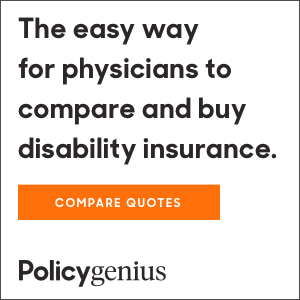(Doximity recently published this article of mine on setting up a local mission clinic. It originally appeared here, but some of you are not on Doximity so, with Doximity’s permission, I have republished it on my site for your reading pleasure)
Many physicians would like to use their skills on the mission field, but have a hard time finding an option that fits into their busy schedules.
Several years ago, I looked for a medical mission, but I couldn’t find one that would work for me, so I came up with the idea of setting up a medical mission experience in my own town. A local mission meant I wouldn’t need to pay for travel to another time zone. I could also provide this service year-round.
First, I needed a place where I could have free office space and a built-in referral base of worthy patients. Our local homeless shelter, the Gospel Rescue Mission, came to mind. The bulk of their residents were at the mission for 6–12 months while they got back on their feet. I discussed this with the mission director, who felt that by spending an hour or two, one day a week, I could see everyone who needed medical assistance right there on site.
Previously, when one of their residents needed medical care, the mission had to find ways to transport them to the hospital. Most of the residents at the mission didn’t have medical insurance or transportation. Many did not have money or even any ID, which was often lost or stolen before they reached the mission. This new medical clinic would solve a problem the mission had been praying about for a long time.
The mission director gave me a room to see patients, installed a sink, and made arrangements for scheduling patients. They already had a volunteer nurse who came weekly, and she was excited to have a physician on board to provide what she couldn’t.
One morning each week the nurse and I arrived at 7 a.m. She would record vitals, check blood sugars if needed, and start the patient’s medical record before they saw me. I could usually see all the patients and be back to my own clinic by 9:30 a.m.
That first day we saw 20 patients and completed all the charting in two hours. There was no insurance that needed approval, no billing, no quotas, and no EMR. We took care of only the immediate needs of the patients. If they had an infection on their arm, we gave them samples of an appropriate antibiotic and had them come back the next week for follow-up. That visit took less than five minutes of my time, including the paperwork. This clinic had a huge impact on the residents at the mission with a very small time expenditure from the nurse and me.
For medical records, we used 4” x 6” index cards. Each patient would have their own card listing their name, birthdate, allergies, and medications. Each visit, the date and a one or two sentence summary of what we found and how it was treated was added to the card. The above-mentioned patient’s entry might look like this: “11-19-19 Patient scraped left forearm on a stick four days ago and now has a superficial skin infection with no abscess and 2” x 2” erythema. Given Keflex 500mg QID for 7 days. Follow up next week.” The card could hold about a dozen visits.
After holding this clinic a few weeks, I found that many of the residents had been in the ED or urgent care recently. I contacted the hospital and explained what I was doing. I requested they provide one of the hospital computer terminals to be placed in our mission clinic allowing us to access the hospital EMR and to get recent lab and X-ray information as well as ED visit information. They thought it was a bargain to help me and provided two computers, one for me and one for the nurse.
If labs or X-rays were needed, I was now able to order them on the hospital’s computer system. Since the hospital already had a program to deal with non-paying patients, they took care of this in their indigent program and were glad our clinic was eliminating the need for the non-paying patient to visit their ED.
Many residents needed medications and often did not have the money to buy them. My nurse talked with several doctors’ offices in town asking if they would give us their expired samples, because medications don’t suddenly become bad after the expiration date. These free samples were a big help to our clinic.
If I had the appropriate medication, I gave the sample to the patient. Otherwise, I would choose a medication from Walmart’s $4 medications list. The mission staff would then take the patient to Walmart to pick up their prescription. If neither of those two options worked, the mission had a program to cover the cost of needed medications.
Prescribing narcotics was initially a problem. The mission had a zero-tolerance policy for narcotic use by their residents. I convinced the staff that sometimes we needed to make an exception. For example, if someone had a broken bone, they would have significant pain for a few days. The mission board decided that if the resident was being treated in the clinic, and the physician felt that a few days of narcotics were needed due to an injury, they would allow it.
A month after the clinic opened, the local newspaper wrote a story about us. This brought other volunteer physicians to our clinic staff. Community members began donating money and slightly used medical items, such as finger splints, ankle braces, and crutches. The cash donations were used to purchase OTC medications like ibuprofen, Tylenol, and antacids to have on hand.
There were several times a specialist was needed. One resident fractured his wrist. Our clinic didn’t have the supplies needed for casting, so we sent him to an ortho clinic. I was able to secure several physicians and clinics in town who volunteered their time and materials to care for patients when we needed help. We would do what could be done at the clinic and the specialists were available to assist as needed. Our little mission clinic grew to involve the rest of the medical community.
One patient I saw was unable to get work because of an inguinal hernia. As soon as an employer found out about his hernia, they wouldn’t hire him. I agreed to fix his hernia for free after previously discussing this option with my partners. I asked him to see me in my office later that day where I could get everything set up. The hospital agreed to cover their charges under their indigent program.
When the patient came into my office, he asked me why I would work for free. I told him it was my way of doing mission work without having to leave the city. I have been blessed by this community over the years and just wanted to give back. He said through tears that no one had ever given him anything. That was a very rewarding moment for me and was a good representation of why I set up the free clinic. More people told me “thank you” in the two hours I spent at the clinic than I heard from my private practice all the rest of the week. People who are really in need are very grateful for help.
People often ask about malpractice coverage. I simply asked my insurance carrier if they would cover me to do this charity work. They said yes, and considered it an extension of my regular practice with no additional premiums.
I encourage you to find a place in your town to do medical mission work. All it takes is a little time and you too will feel a great reward from helping those in need who are less fortunate than yourself. If you skin your knee, you can just go to the medicine cabinet and get a Band-Aid. The homeless don’t even have a medicine cabinet.






This is an inspirational story.
I have to resume my charity clinic work.
Thanks